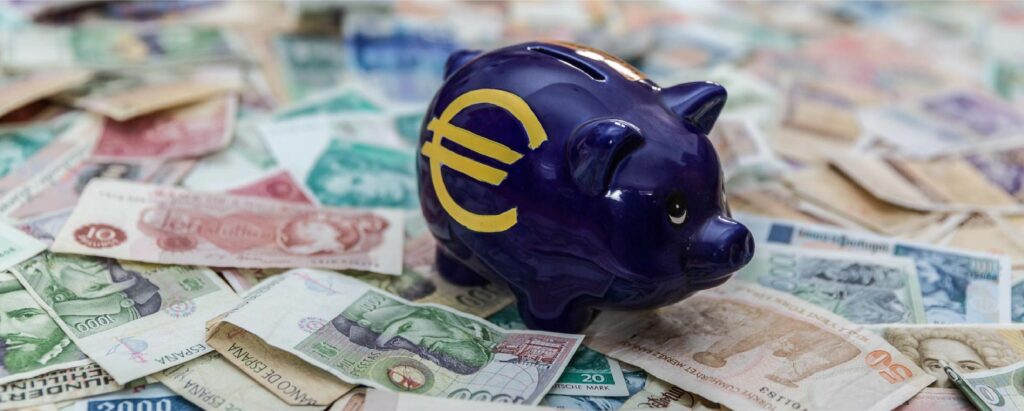When you return from holiday, exchanging leftover currency back into pounds is probably well down your list of things to do – sat underneath unpacking, stocking the fridge, and easing back into work.
However, exchanging your currency as soon as you get home can do wonders for your bank account – with British holidaymakers found to be hoarding upwards of £2.7 billion in unused currency collectively.
With that in mind, what’s the cheapest and most efficient way of exchanging foreign currency – and what fees do you need to be aware of when selecting the best exchange method for you?
What are the fees for exchanging foreign currency?
The fees that are charged for exchanging foreign currency differ based on the platform you use, with some charging more than others.
Bureau de Change facilities and foreign exchange offices typically charge the highest fees, up to 10% of the value of each exchange.
The post office operates with a rolling exchange rate based on how much money you are exchanging. The more currency you have to exchange, the better the rate – meaning that those who want to exchange a relatively small amount of leftover currency will ultimately lose out.
Despite taking no commission from each transaction, the post office’s variable rate based on the value of your exchange does not favour those exchanging small quantities back into pounds.
Now we have Leftover Currency, an online platform which promises more efficient, cost-effective, and accessible exchange services than any of the aforementioned high street options.
With Leftover Currency, not only do customers benefit from internet-leading exchange rates regardless of the value of their exchange, but there are absolutely no fees to pay (beyond those charged by third-party providers like PayPal and your own bank).
Keep reading to find out more about how much it costs to exchange currency and how Leftover Currency operates with no direct fees for you, the customer.
How much does it cost to exchange currency?
The cost of exchanging currency is generally determined as a percentage of the value you are exchanging. If you use a card for overseas payments, you will likely notice some transaction fees on your statement when you return home – unless you use a 0% fee overseas payment credit card, that is.
This charge is a percentage of the amount you spent in each transaction – with exchange fees working in the same way.
When you use a Bureau de Change, the post office, or even a foreign currency exchange desk at the airport, the variable rates will include a fee paid directly to the retailer or service provider.
And that’s not all. When considering the cost of exchanging currency, it’s not just fees you need to be aware of. The cost to you as the customer is also heavily impacted by the exchange rate – that is, the value in pounds that you receive, in exchange for your foreign currency. Different outlets will offer and honour different exchange rates – the better the exchange rate, the lower the cost of the exchange to you.
If you want to benefit from leading exchange rates and a 0% exchange fee, you’ve come to the right place. Leftover Currency’s platform consistently monitors the exchange across over 170 currencies, staying on top of the market and delivering an unrivalled service to all customers.
What’s more, the Leftover Currency operational model works without a direct charge or fee to customers – meaning that you genuinely receive every penny of the value of your exchange.
How do you calculate exchange fees?
Wondering how Leftover Currency can offer their services without charging a fee to customers? Well, here’s how it works.
We don’t charge any fees or commission. You will receive payout based on our exchange rates as outlined on the website, with Leftover Currency’s margins covered by the so-called spread between the mid-market exchange rate and our buy exchange rate.
For currency types that are more difficult to exchange, for example foreign coins, the spread between the mid-market exchange rate and our buy exchange rate is typically higher than for types of currency that are easier to exchange.
Still, our buy exchange rates are the best rates for foreign coins and obsolete notes on the Internet. We monitor this daily. In the unlikely event of finding a better buy exchange rate for foreign coins or obsolete banknotes elsewhere, please let us know.
Of course, while we don’t charge fees directly, it’s important to note that some of the third party payment institutions we work with may charge you a fee:
– PayPal charges a fee of £0.20 plus 3.40% of the amount received. If you live outside the UK, the PayPal fees for international payments apply.
– Sometimes your bank may charge you a fee to receive an international payment. This seems to be the case with many Canadian banks. Ask your bank if you’re unsure. There is no fee for customers living in the United Kingdom or Single European Payment Area (SEPA).
What is the most cost-effective method of exchanging foreign currency?
If you want to exchange unused and leftover foreign currency back into British pounds, the simplest and most transparent method is Leftover Currency’s online service. With access to the best exchange rates, no fees, and a reputable and reliable service, we make it easy for you to receive a direct bank transfer or make a charitable donation of the full amount in pounds, based on the currency you send to us.
For more information on our services, get in touch with us directly.

 Loading
Loading